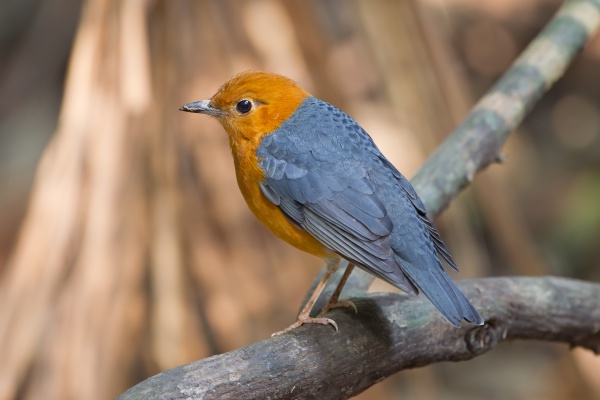Facts About Orange-headed thrush
The orange-headed thrush is an enchanting bird belonging to the thrush family, often observed in the densely wooded regions of the Indian Subcontinent and Southeast Asia. These birds favor shady, damp habitats and are known for their secretive nature. As omnivores, their diet consists of insects, earthworms, and fruit. Unlike some bird species, the orange-headed thrush does not form flocks and prefers to nest in trees. Males are easily identifiable with their striking orange heads and underparts, while females and juveniles are more brownish on the back.
First described by John Latham in 1790 as Turdus citrinus, the orange-headed thrush comprises around 12 recognized subspecies. These birds exhibit some regional variations, with a few of the subspecies being migratory. Their range extends from the Indian Subcontinent to Southeast Asia, where they flourish in moist, broadleaved evergreen forests.
Visually, the orange-headed thrush is quite distinctive with its vibrant orange and grey plumage. The subspecies show variations in plumage hues and patterns, making them fascinating to observe. Their calls are diverse, and their songs are composed of sweet, melodic notes. Typically shy, these birds are usually spotted alone or in pairs. They build cup-shaped nests and are sometimes targeted by the pied cuckoo, a brood parasite.
These thrushes are most active during dawn and dusk, foraging on the ground for insects, larvae, spiders, and fruit. Despite being classified as Least Concern regarding conservation status, they face threats such as trapping for the pet trade in certain areas. Interestingly, the orange-headed thrush has adapted well to new environments, even establishing a presence in areas like Hong Kong as the forests there have matured.

 China
China